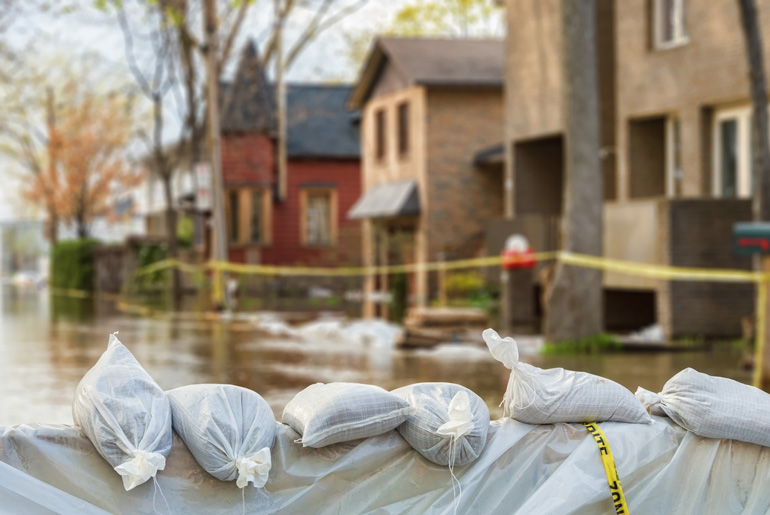
Harvey. Irma. Katrina. The list of hurricanes and other natural disasters that have impacted the lives of millions of people continues to grow. Natural disasters disrupt communications, restrict access to basic needs like electricity and water, and can isolate entire communities, forcing them to fend for themselves.
Munich Re, a reinsurance company based in Germany, reported that natural disasters caused more damage in 2017 than in any of the five previous years, events that some suggest are linked to our continually warming climate. As a part of the AggiE- Challenge event, students are working to change the way communities survive and thrive during natural disasters with a multifaceted program called Disaster IQ.
Disaster IQ has three primary components: “TweetIt,” “SeeIt” and “MapIt.” Each component helps in providing disaster information through analytical data gathering, resident self-reporting and disaster scenario education.
“The approach we are using is based on data from a variety of sources to identify the effects different issues have on these communities,” said Dr. Ali Mostafavi, the project faculty advisor and an assistant professor in the Zachry Department of Civil Engineering at Texas A&M. “The goal with this is three-fold: educating people on how to be smarter Residents during disasters, using online data sources, like social media, for problem detection and cataloging, and promoting resident self-reporting of issues like flooding or downed power lines in and around their communities.”
The primary goal behind Disaster IQ is the dissemination of critical information. Organizations, such as the U.S. Army National Guard and other relief entities, can use data gathered by Disaster IQ to triage and address challenges during and after national disasters. This kind of community is what civil engineering student Ehab Abo Deeb calls a “smart city,” a city that can address challenges through data integration and community support.
“The idea going forward is that we’ll consolidate all of these practices into a single app,” said Abo Deeb. “‘TweetIt’ takes data from tweets and puts the incident, maybe a power outage, on a digital map to provide information to emergency responders. We also have ‘MapIt’ so that a user can manually put an incident on a map and report it, and we have ‘SeeIt,’ which [has] educational videos that teach people to be smarter Residents, how to see warning signs, and how to use the software to help themselves.”
The key idea in this project, according to Abo Deeb, is community. Each resident has to pitch in to provide the information, either self-reported or via social media, to give emergency services the information they need to succeed. Abo Deeb and his team were in the process of developing “TweetIt” when Hurricane Harvey struck, which put a whole new perspective on their work.
“We all sifted through tweets manually during Harvey and Irma, Abo Deeb said. “My brother lives in Houston and the community where he works was heavily flooded. I was touched seeing this area in disarray and seeing people clean up their houses. It’s a vibrant community out there and to me it just reinforced the idea that we all have to pitch in as a community.”
The team presented their prototype at the Texas A&M Engineering Project Showcase on April 27 with the goal that interested parties will help continue the project’s development. In the future, they hope to integrate other social media platforms and web assets to help report the best information possible to emergency services.
“The next phase is scaling the technology,” Mostafavi said. “This system is a prototype in terms of the amount of data we’re currently able to process, which is a body of about 100,000 tweets. During Harvey we had 23 million tweets alone that conveyed some type of disaster information, so we want to build a capacity in the system that hits millions and billions and is able to analyze that data.”
Senior computer science engineering student Michael Peterson is one of the students involved with “TweetIt,” focusing on data analytics and using the data in tweets to create a comprehensive map.
“One of the challenges is how we collect information from these tweets,” Peterson said. “I’m working on clustering tweets, which involves taking tweets that are all happening in the same area to create reliable information on what is happening.”
As Peterson, Abo Deeb and eight other team members involved keep working to expand Disaster IQ, their hope is that one day city municipalities will be able to use Disaster IQ as a reliable tool to promote infrastructure resilience, disaster response and better the lives of those in the affected communities.“
Our goal is to deliver a tool to improve the lives of people during these extreme events and to transform this into a product for users,” Mostafavi said. “I think the students are making great strides in doing that and we are excited to see it go further.”